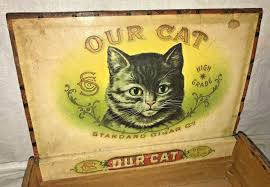
In August 1904, Charles J. Nielsen, one of the most prominent cigar manufacturers in Brooklyn, acquired a black cat for his Bushwick cigar shop at 1369 Broadway, on the southeast corner of Gates Avenue.
I don’t know why Charles added a feline employee to his cigar store. I also don’t know where he got the cat. What I do know is that he named the cat Luck — which, sadly, turned out to be an appropriate name.
According to a story about Luck the cat in the New York Times on August 7, 1904, the cat had been at the cigar shop for only one day when a little Skye Terrier owned by Justice Samuel Thomas Maddox of the New York State Supreme Court chased him up a wire partition. In the process, Luck knocked down a dozen boxes of cigars, causing much damage.
“Just my luck,” Charles Nielsen told the reporter, as he picked up the broken cigars. “Yes,” replied Deputy Sheriff Bob Hill, “It was your Luck, and not the judge’s dog that did it.”

On the following day, the cigar shop cat found a drawer open in the safe and, pawing at a package of postage stamps, pulled the stamps to the floor and tore them in strips.
“That’s my Luck again,” Charles said as he recalled the incident. “That cat is a Post Office robber.”
One morning after opening his cigar shop, Charles found the cat chewing a bunch of banknotes. He then recollected that he had forgotten to close the
cash register drawer on the previous night. After concluding that he had lost $6, Charles remarked, “Just my Luck again.”
Apparently some of Charles’ friends were in the shop as he told his story, and they began laughing at him. He picked up Luck and “hurled him into the back room” while shouting, “You black cat, you, you are bad luck!” (That poor feline soul.)
The men laughed as the poor bad-luck kitty fled from the store. At that moment, according to the account, “a self-possessed white kitten strolled in at the open door.”
“My! Hasn’t my Luck changed?” Charles said, as he welcomed the new cat into his cigar shop. Let’s hope he treated the new cat much better than he treated Luck.
This concludes the cat portion of the story. If you would like to learn more about Charles Nielsen or explore the history of Bushwick, read on.
The Cigar Man of Brooklyn
Charles J. Nielsen was born in Elsinore, Denmark, in 1850. He came to America in 1861 and married a Brooklyn girl named Cornelia M. Brimlow in 1879. During his younger years he worked as a ship captain; he later joined the Jamaica Bay and Bergen Beach Yacht Clubs, and once served as the Commodore of the Canarsie Yacht Club.
During a ten-year period, Charles and Cornelia had five children: Charles J. Nielsen Jr. (1882-1889); Olof Andrew (1883-1913), Allyn Field (1888-1947); Ethel A. (1890-?); and Albert Goodwin (1892-1955).
In 1890, Charles and a Brooklyn carpenter named Thomas S. Priestley purchased a lot on the corner of Broadway and Gates Avenue. There, Charles established what would eventually become one of the largest cigar manufacturing companies in Brooklyn. By 1900, according to the census report, the prosperous Nielsen family was living in a beautiful Queen Anne row house at 53 Linden Street.
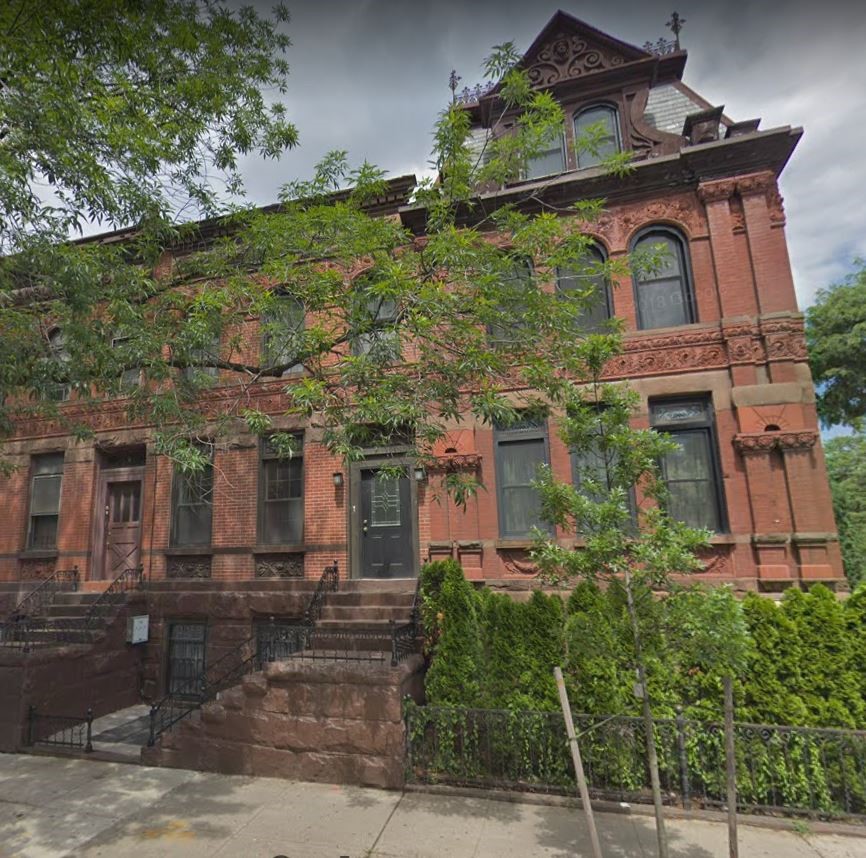
Cornelia died on September 30, 1905, which was just one year after Luck the cat had arrived at the cigar shop. She was only 49. Charles married Anna Schloetterer, a much younger woman (he was 54, she was only 23) on January 10, 1906.
On July 11, 1912, a large fire that started in the basement caused about $10,000 worth of damage to the building on Broadway. The fire spread rapidly and gutted the entire building, including the cigar shop on the ground floor, H.C. Thompson’s dental parlor on the second floor, and apartments on the top two floors.
The building was eventually replaced with a new structure; in 1921 it housed Broadway Gardens, which was billed as an American and Chinese restaurant. Today the site is occupied by a large US Post Office building.
By the time the fire occurred, Charles had already expanded his business and moved to a much larger facility at 1087 Gates Avenue. This property included a two-story with basement brick building where Charles lived with his family and a one-story attached building in the rear that served as the cigar factory.
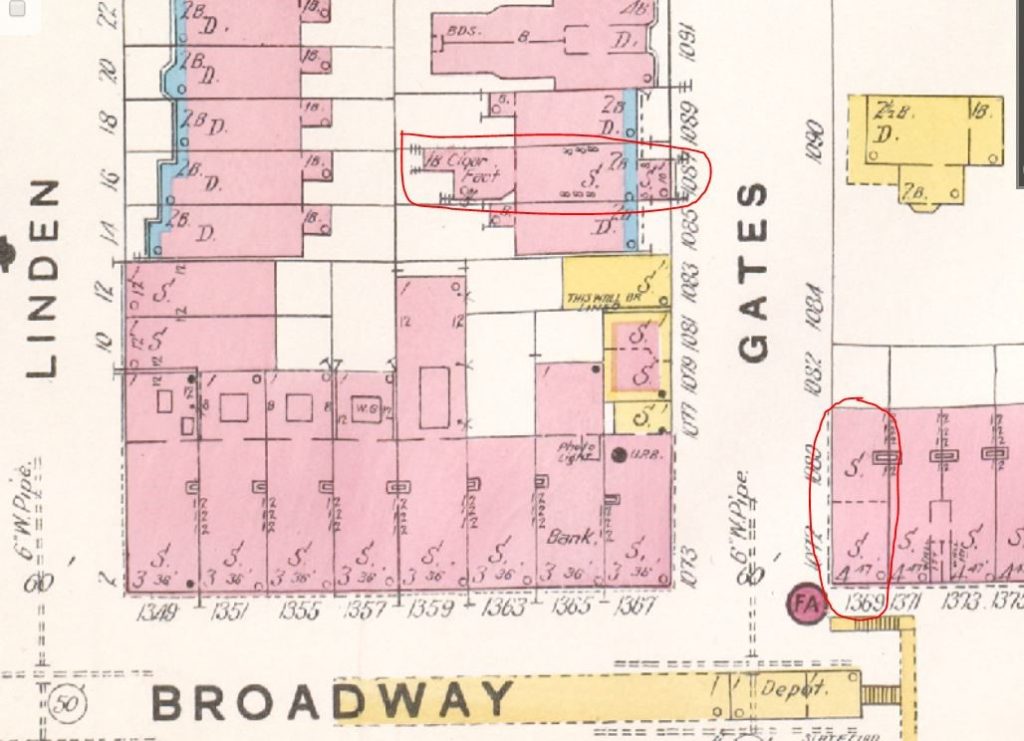

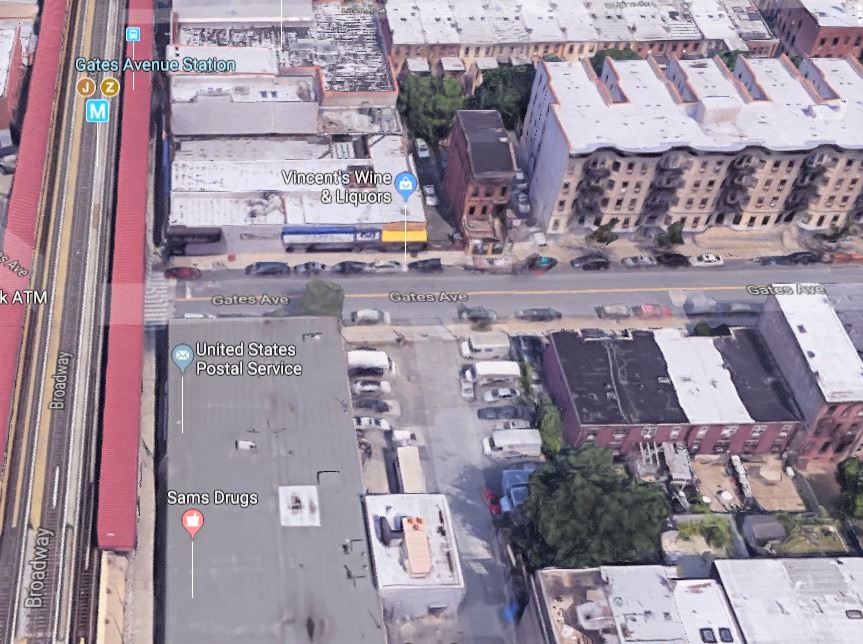
Charles Nielsen died on March 8, 1920, at his home. His sons Allyn and Albert continued the cigar business in the “flourishing factory” at 1087 Gates Avenue for many years. Two of their most popular brands were Havana Rose and La Flor de C.J.N., which was named in honor of their father.
A Brief History of Bushwick and Bowronville
The town of Bushwick was one of the original six towns in Brooklyn. In 1855, Bushwick, Williamsburg, and Greenpoint were merged into the City of Brooklyn, forming its Eastern District until the consolidation of Greater New York, which took place in 1898.
The area of Bushwick where Charles Nielsen lived and operated his cigar shop was once called Bowronville, after Watson Bowron. Watson was born in New Castle, Westchester County in 1807. He married Maria Field in 1830 and they moved to Long Island (Brooklyn) in 1847.
Watson and Maria operated a dairy farm on a large, irregularly shaped parcel that Watson had purchased from members of the Suydam and Remsen families in 1848. The Bowrons built a house near what is today’s Grove Street and Evergreen Avenue (which was then part of the old Bushwick Turnpike). For several years, they lived here with their children
William H., Josephine, Maria Louise, and Francis W.

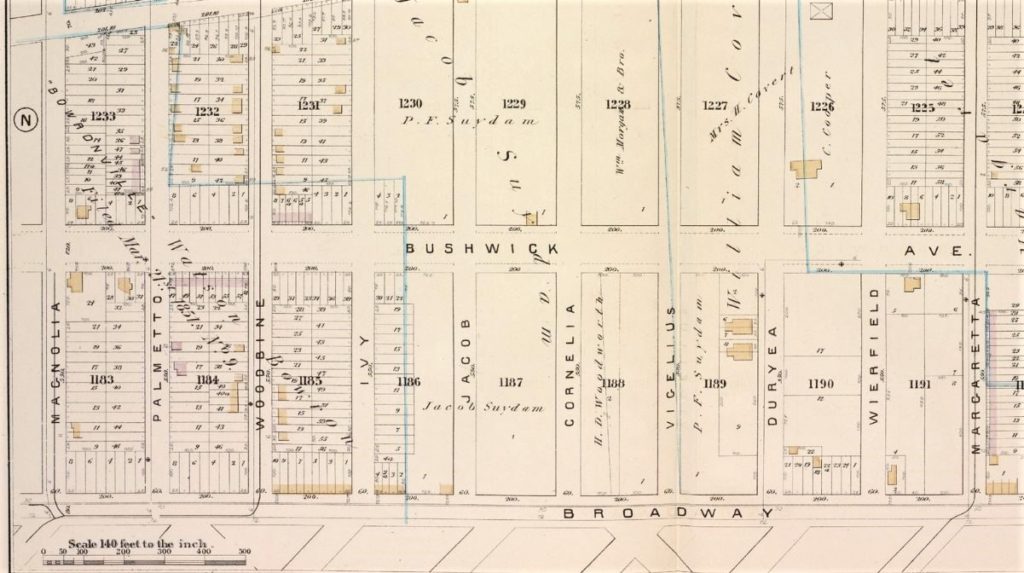
Shortly after Francis Bowron was born, Watson opened up Broadway through his property and cut up 80 acres of his land into building lots. According to the Deeds and Conveyances of June 10, 1848, he named all the streets in this new subdivision for trees and vines: Evergreen, Grove, Linden, Magnolia (now Gates Avenue), Palmetto, Woodbine, and Ivy Streets.
During this time, Bushwick Turnpike (now Evergreen Avenue) was just a turf road for farmers that comprised small ruts for the wagon wheels and two narrow paths for the horses. The road was usually covered with flocks of white geese. On Sundays, everyone used the road to flock to the Old Dutch Reformed Church.
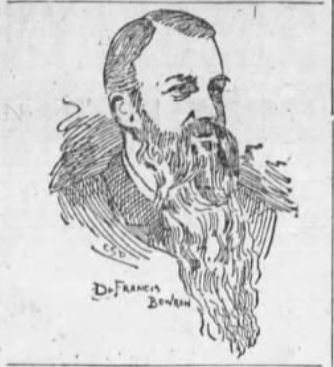
So Watson purchased a stage coach and established a line along the old turnpike that started near his homestead on Evergreen Avenue and made connections twice a day with Williamsburg.
A large crowd reportedly gathered near his home to celebrate the stage line, and they placed a sign on his lands that read Bowronville.
In 1852, Watson sold part of his holdings in Bushwick and moved his family to Whitestone, Queens, where he continued to pursue farming and real estate. At one point he purchased about 200 acres of land in Flushing, which he later sold to a syndicate that greatly improved Flushing by laying out lots and adding curbs, gutters, and sewers to the country roads.
Bowronville remained quite rural through the 1880s, as the map above shows, with only a few wood frame houses scattered throughout the little village. Newspapers reportedly touted the area as a great place for rustic picnics and recreation.
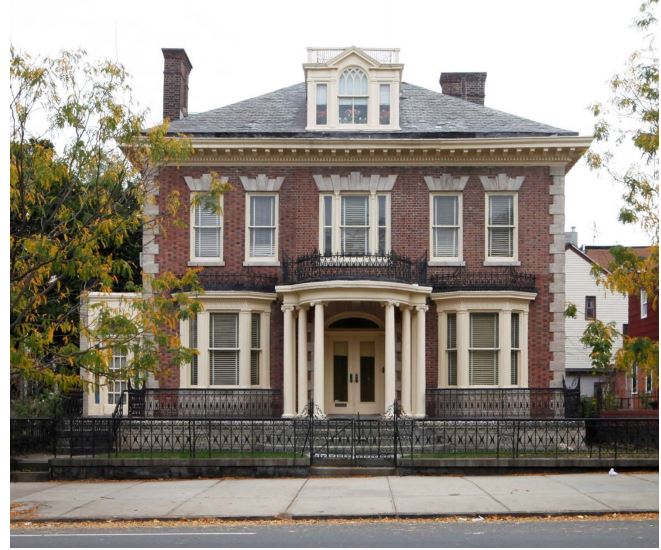
In October 1871, the Bowrons moved again, this time to 259 Tompkins Avenue in the Bedford-Stuyvesant section of Brooklyn. Watson died in July 1876 and was buried in the circa 1820 Friends Quaker Cemetery, located in the center of Prospect Park.
Seven years after his father’s death, Francis Bowron married Miss Eugenie Betts. When she passed away only a few years later, Francis erected a granite monument on a large plot at Green-Wood Cemetery. A few years later, he had his father’s remains moved there.

If you enjoyed this tale, you may want to read about Snooperkatz, the silk thread shop cat on Broadway.



Skye Terrier. NAmed after the Isle of Skye.
Thanks! I was just copying who it appeared in the news article, but I’ll fix it to make it correct.